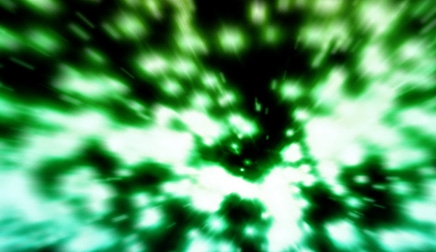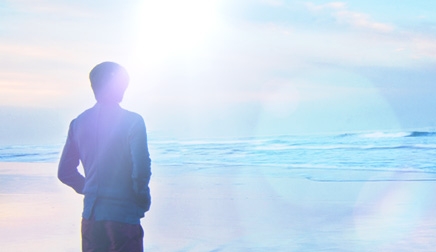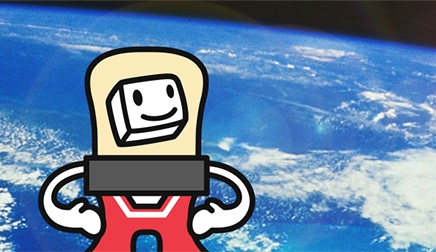 Home > Nature of light > The wave-particle duality of photons
Home > Nature of light > The wave-particle duality of photons
The wave-particle duality of photons

In “Nature of light,” we described that light has the properties of wave and a particle.
On this page, we will take a second look at that concept.
Is light a wave? - Young’s interference experiment -
Is light a particle? - Einstein’s light quantum hypothesis -
Is light a wave?
- Young’s interference experiment -
In 1807, an English physicist named Thomas Young asserted that light has the properties of a wave in an experiment called Young’s Interference Experiment. This Young’s interference experiment showed that lights (waves) passing through two slits (double-slit) add together or cancel each other and then interference fringes appear. This phenomenon cannot be explained unless light is considered as a wave.

Is light a particle?
- Einstein’s light quantum hypothesis -
Albert Einstein was a physicist whose life spanned the countries of Germany, Switzerland and America. In 1905 he succeeded in explaining the photoelectric effect which had been unexplainable if one only considers light as a wave. Einstein asserted that light is a particle containing energy corresponding to their wavelength.
The photoelectric effect is a phenomenon where irradiating a blue light on metal emits electrons from it. However, red light does not cause electron emission from metal no matter how long or how intense the light is applied. To understand this effect, you should think of photon as (clusters of) particles containing energy. Blue light is particles having high energy capable of emitting electrons. Red light is particles containing low energy not capable of emitting electrons.
So light in this way came to be called “photons (light quanta)” since it has the properties not only of a wave but also of a particle.

The duality of photons
“Light is not only a wave but also a particle” An experiment was performed to deepen our understanding of this concept.
This is Young’s Interference Experiment or Double-slit Interference Experiment. This experiment was carried out using technology to detect individual light particles to investigate whether interference fringes appear even if the light is drastically weakened to the level having only one particle. Results from the experiment confirmed that one photon exhibited an interference fringe.

When light weakened to an extreme brightness limit and projected on a screen is detected, it behaves like a particle as seen on the left. However when the recorded particle count increases, an interference fringe appears as seen on the right. One can see from this that light also behaves as a wave.

When one of the two slits in the experiment is closed so that one photon particle can only pass through the other slit, then no interference fringe appeared. This demonstrated that in the double-slit interference experiment, one photon particle simultaneously passed through the two slits and interfered by itself.
These experiments show that while a photon was detected as having the properties of a particle, interference appeared like that of a wave while simultaneously passing through the double-slit, revealing that the photon has the dual properties of a particle and a wave.
This experiment captured the dual nature of the photon by a special camera for the first time ever in the world and you can check it out on the video below.
Please refer to this page (Copyrights and trademarks) in order to use or quote the images and video content on this page for other media.
See these references on "Young's Interference Experiment with a single photon".
Reference (1)
Y. Tsuchiya, E. Inuzuka, T. Kurono, M. Hosoda, Photon-Counting Imaging and its Application, Advances in Electronics and Electron Physics, Vol. 64A, pp. 21-31, 1986
https://doi.org/10.1016/S0065-2539(08)61600-5
Reference (2)
Y. Tsuchiya, E. Inuzuka, M. Sugiyama, T. Kurono and C. Horiguchi, 'Young's Experiment for Interference' Under Photon-counting Light Level, The Journal of the Institute of Television Engineers of Japan, Vol. 36, No. 11, pp. 1010-1012. 1982 [published in Japanese]
The nature of the photon
Based on Einstein’s light quantum hypothesis, the duality of the photon was confirmed quantum-mechanical experiments and examination. The photon is now regarded as a particle in fields related to the interaction of material with light that is absorbed and emitted; and regarded as a wave in regions relating to light propagation.
Well then how is it that the photon simultaneously possesses two completely different properties? What exactly is a photon anyway?
IT is known that among the four forces constituting the universe, the photon serves to convey electromagnetic force. The other three forces are gravitational force, strong force, and weak force. The photon plays an important role in the structure of the world where we live and is deeply involved with sources of matter and life.
By knowing the nature of the photon, we can utilize light more effectively and create an innovative new society that exceeds our imagination. If we could make this happen through the fresh sensitivity, imagination, and enthusiasm of those viewing this website, then it would be wonderful.
The “Mitsuko/Koshi no Saiban (Photon on trial)” is a story setup as a mysterious courtroom drama on the dual nature of the photon. It was written by Shinichiro Tomonaga, a winner of Nobel Prize in physics, and published in 1949. This work is a famous scientific essay that describes the essence of quantum mechanics in an easily understandable way and has been read by a great many people up to date.
Recently, the research involves estimating which one of the two slits the photon passed through, or in other words, calculations and experiments carried out using the “weak value,” have been conducted frequently. The study seeking the nature of the photon is gathering greater attention.
The “Photon on trial” can be found in a number of books on quantum mechanics. The following are recommended to those interested in reading further.
・“Ryoshi-rikigakuteki Sekaizou(The World seen through Quantum Mechanics)” Shinichiro Tomonaga, (Koubundou, 1965)
・“Kagami no Naka no Butsurigaku(Physics in the Mirror)” Shinichiro Tomonaga, (Kodansha Gakujutsu Bunko, 1976)
・“Ryoshi-rikigaku to Watashi(Quantum Mechanics and Me)” Shinichiro Tomonaga, Hiroshi Ezawa (editor) (Iwanami Bunko, 1997)

Jan. 2014 issue of Nikkei Science “Photon on trial” Again, “Is Mitsuko Namino (Miss Photon Wave) really innocent?”
“God said, ‘Let there be light’...”
Since ancient times people believed that light was with God, or, that light was God himself. In light, the origin of all kinds of lives, human beings stop their heads and see him God.
In 1984, Hamamatsu Photonics produced an educational video on light. This is a commentary intermingled with animation that follows up on the “What is light?” question in an easy to understand way.

Mr. OHSUKA

Mr. TOYODA

Mr. TAKAMOTO

Mr. OHTAKE

Mr. TAKAHASHI








